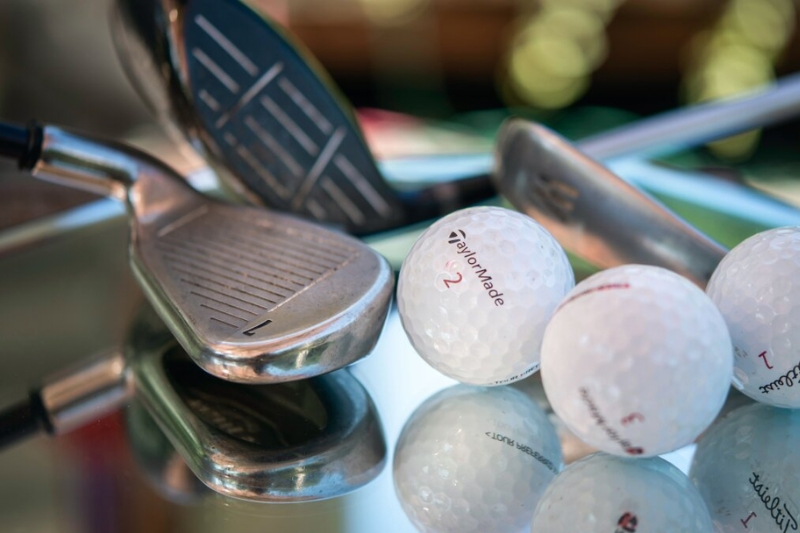Taking care of your golf clubs is crucial for maintaining their performance and longevity. Whether you’re a seasoned golfer or just starting out, proper maintenance can make a significant difference in your game. In this guide, we’ll walk you through the essential steps to keep your clubs in top condition. From cleaning techniques and storage tips to regular inspections, you’ll learn how to take care of golf clubs. Let’s dive in and make sure your equipment stays as sharp as your skills!
About the lifespan of golf clubs

Golf clubs are an investment, and like any investment, it’s important to know how long they’ll last. The lifespan of golf clubs varies depending on several factors, including the type of club, frequency of use, maintenance, and the materials they’re made from. Here’s a detailed look at what affects the lifespan of golf clubs and how long you can expect yours to last.
Type of Golf Club
- Drivers and Woods: These clubs generally have a shorter lifespan than irons because they are used for powerful, high-speed swings. Modern drivers and woods, made with advanced materials like titanium and carbon fiber, can last around 3-5 years with regular use. However, with proper care and less frequent use, they can last even longer.
- Irons: Irons are more durable and can last 5-10 years or more, depending on use and maintenance. Forged irons, made from softer steel, might wear out quicker than cast irons, which are made from harder metals.
- Wedges: Wedges tend to wear out faster than other irons due to their higher usage and the fact that they’re often used in sand and rough terrain. Expect to replace your wedges every 2-3 years if you play regularly.
- Putters: Putters can last a lifetime if taken care of properly. Since they don’t undergo the same stress as other clubs, they’re less likely to suffer damage.
Frequency of Use
The more you play, the quicker your clubs will wear out. A casual golfer who plays a few times a month will find their clubs lasting significantly longer than a competitive golfer who plays several times a week.
Maintenance and Care
Proper maintenance can extend the life of your golf clubs. Regular cleaning, drying, and proper storage prevent damage and wear. Regripping clubs and checking for damage also contribute to their longevity.
Materials and Technology
Modern clubs made with advanced materials and technology are designed to be more durable and resilient. For example, titanium drivers are both lighter and stronger than older steel models. However, even the best materials can wear out over time with heavy use.
Signs Your Clubs Need Replacing
- Visible Damage: Dents, cracks, or loose clubheads are clear signs it’s time for a replacement.
- Performance Issues: If you notice a decline in your performance, such as loss of distance or accuracy, it might be due to worn-out clubs.
- Worn Grooves: Grooves on irons and wedges can wear down, reducing spin and control. If your clubs aren’t gripping the ball like they used to, it’s time for new ones.
- Old Technology: Golf club technology advances rapidly. If your clubs are more than a decade old, you might benefit from the improvements in newer models.
When to Upgrade
Even if your clubs aren’t showing visible signs of wear, you might still consider upgrading for better performance. Advances in golf club technology can provide improved distance, accuracy, and forgiveness, making the game more enjoyable and competitive.
How to Take Care of Golf Clubs

Golf clubs are like the trusty steeds of a golfer’s arsenal. They’re not just tools; they’re companions on the fairways, partners in pars, and allies in eagles. To ensure they perform at their best and last for years, proper care is essential. Whether you’re a seasoned pro or a weekend warrior, here’s a handy guide on how to take care of your golf clubs.
Clean Your Clubs Regularly
Dirt, grass, and debris can accumulate on your clubs, affecting your swing and ball contact. Here’s how to keep them spotless:
- Post-Round Clean-Up: After each round, wipe your clubs with a damp cloth. This quick routine removes surface dirt and prevents buildup.
- Deep Cleaning: For a more thorough clean, fill a bucket with warm, soapy water. Dip the clubheads (but not the shafts!) and use a soft-bristle brush to scrub away any grime. Pay special attention to the grooves on the clubface; clean grooves mean better spin and control.
Dry Your Clubs Properly
Moisture is the enemy of golf clubs. After cleaning, ensure your clubs are completely dry before storing them. Use a dry towel to wipe off any water, and let them air dry for a few minutes to avoid rusting.
Store Your Clubs Correctly
Where and how you store your clubs can significantly impact their lifespan:
- Avoid Extreme Temperatures: Keep your clubs in a cool, dry place. Extreme heat can weaken the glue on the clubheads, while cold can make the shafts brittle.
- Use a Golf Bag with Individual Dividers: This prevents clubs from banging into each other, which can cause nicks and dings.
- Don’t Leave Them in Your Car: Cars can get hot, especially in summer, and this can damage your clubs over time.
Check for Damage Regularly
Inspect your clubs regularly for signs of wear and tear:
- Shafts: Look for dents, cracks, or bending. A damaged shaft can seriously affect your game and could even break mid-swing.
- Grips: Over time, grips can become slippery or cracked. If they feel hard or slick, it’s time for a replacement. Fresh grips can give you better control and comfort.
- Clubheads: Ensure the clubheads are securely attached and check for any loose parts.
Regrip When Necessary
Grips wear out with use and exposure to the elements. A general rule of thumb is to regrip your clubs once a year or every 40 rounds. Fresh grips can dramatically improve your feel and performance.
Use Headcovers
Headcovers are not just for drivers and woods. Consider using them for your irons and putter as well. They protect the clubheads from scratches and dings, especially during transport.
Be Mindful of Your Swing

Hitting the ground too hard or using your clubs for purposes other than golfing (like knocking out stubborn golf balls from trees) can damage them. Treat your clubs with respect, and they’ll reward you with better performance.
Professional Maintenance
Every so often, it’s worth taking your clubs to a professional for maintenance. They can check the loft and lie angles, regrip, and perform any necessary repairs to keep your clubs in top shape.
Travel Safely
When traveling, use a sturdy travel bag to protect your clubs. Opt for a bag with padding and a reinforced base to prevent damage during transit.
Appreciate Your Gear
Lastly, remember that your golf clubs are an investment. Taking good care of them not only extends their life but also enhances your game. So, show your clubs some love, and they’ll repay you on the course.
In conclusion, caring for your golf clubs is not just about maintaining their appearance; it’s about preserving their performance and ensuring you get the best out of your game. With a little effort and attention, your clubs will stay in great condition, helping you hit those perfect shots time and time again. Happy golfing!

I am the owner of Ricks Golf Shop, a popular destination for golf enthusiasts. My passion for golf began in my teenage years and has only grown over the years. With over 10 years of experience in the golf industry, I offer expert advice and quality products. With a friendly demeanor and extensive knowledge, I ensure every customer leaves happy.
